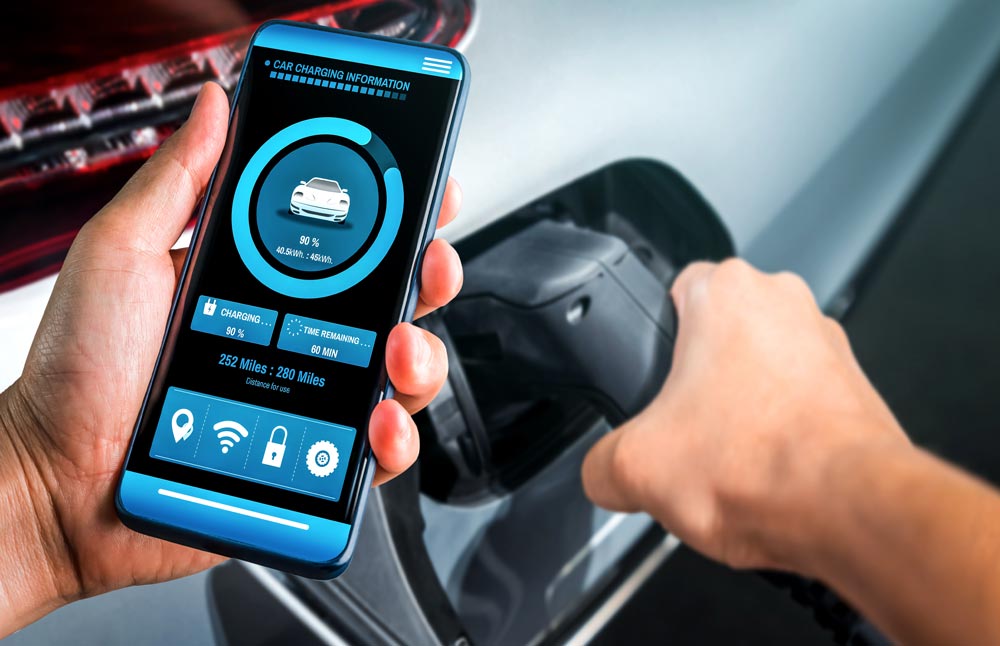The global transition to electric vehicles (EVs) is accelerating rapidly, with millions of EVs hitting the roads worldwide. This shift towards sustainable transportation is not only reducing greenhouse gas emissions but also reshaping the way we think about mobility. However, EV adoption also comes with its set of challenges, particularly when it comes to charging infrastructure.
The Internet of Things (IoT) is playing a pivotal role in optimizing charging infrastructure for electric vehicles. IoT-powered solutions can help to improve the efficiency, convenience, and accessibility of EV charging, making it easier and more affordable for people to switch to EVs.In this blog, we’ll explore how the Internet of Things (IoT) is playing a pivotal role in optimizing charging infrastructure for electric vehicles, making EV ownership more convenient and accessible than ever before.
The EV Revolution: A Growing Trend
The rise of electric vehicles is undeniable, and the numbers tell a compelling story. In 2020, global EV sales reached 3.1 million, a remarkable increase from just a few years prior. By 2030, it’s estimated that EVs will account for approximately 28% of all vehicle sales. This exponential growth is not just about cars; it extends to electric buses, bikes, and even trucks, ushering in a greener and more sustainable era of transportation.
Challenges for EV Drivers
Despite the undeniable benefits of EVs, drivers face some hurdles that can deter adoption. One of the primary concerns is charging infrastructure. Range anxiety, the fear of running out of battery before reaching a charging station, is a genuine worry for many EV owners. Additionally, the convenience and speed of charging can be inconsistent, depending on location and infrastructure availability. This has prompted the need for efficient and widespread charging solutions.
IoT Revolutionizes Charging Infrastructure
Enter the Internet of Things (IoT), a network of interconnected devices and sensors that can collect, transmit, and analyze data. IoT technology is transforming the EV charging landscape in several ways:
- Real-time Monitoring: IoT-connected charging stations can provide real-time data on station availability and charging status. EV drivers can access this information through smartphone apps or websites, minimizing wait times and uncertainty.
- Predictive Maintenance: IoT sensors can monitor the health of charging equipment, detecting issues before they cause downtime. This proactive maintenance approach ensures that charging stations remain operational.
- Grid Integration: IoT enables smart grid integration, allowing charging stations to communicate with the electrical grid. This ensures efficient energy usage, reduces grid stress during peak demand, and even supports vehicle-to-grid (V2G) technology, where EVs can supply power back to the grid.
Benefits of Using IoT in Charging Infrastructure
The utilization of IoT in charging infrastructure brings a multitude of advantages for EV drivers, charging providers, and the environment:
- Enhanced User Experience: Real-time data access reduces range anxiety and provides drivers with a seamless charging experience.
- Increased Reliability: Predictive maintenance minimizes downtime, ensuring that charging stations are consistently available.
- Optimized Energy Use: Smart grid integration maximizes energy efficiency, reducing operating costs and environmental impact.
- Cost Savings: IoT-enabled stations can track energy usage and provide billing accuracy, reducing disputes and ensuring fair charging fees.
Examples of IoT-Optimized Charging Infrastructure
Several countries and companies are leading the charge in implementing IoT solutions to optimize EV charging infrastructure:
- China: China is at the forefront of EV adoption, with companies like NIO and BYD implementing IoT technology to enhance their charging networks. NIO’s Power Swap stations, for instance, offer quick battery swapping facilitated by IoT systems.
- Europe: The European Union is investing heavily in IoT-connected charging infrastructure. Companies like Allego and ChargePoint are expanding their networks to provide EV drivers with reliable, data-rich charging experiences.
- United States: In the U.S., Tesla’s Supercharger network is a prime example of IoT-optimized charging. These stations communicate with Tesla vehicles to provide seamless charging experiences.
Upcoming Trends in Charging Infrastructure
As technology continues to evolve, several trends are poised to shape the future of charging infrastructure:
- Ultra-fast Charging: We can expect more ultra-fast charging stations, capable of delivering hundreds of miles of range in just a few minutes.
- Wireless Charging: Wireless charging technology is advancing rapidly, offering the convenience of “park and charge” without physical connections.
- Increased V2G Integration: Vehicle-to-grid technology will grow, allowing EVs to not only charge from the grid but also provide power back when needed.
- Blockchain-based Payments: Secure, transparent, and decentralized blockchain technology may become the basis for EV charging payments, streamlining transactions.
Conclusion
The use of IoT to optimize charging infrastructure for electric vehicles is a game-changer. It addresses one of the most significant concerns of potential EV buyers—charging accessibility and reliability. As we witness the global transition to electric transportation, IoT plays a crucial role in ensuring a smooth and convenient experience for EV owners. Real-time monitoring, predictive maintenance, and smart grid integration are just the beginning of the IoT revolution in the EV charging sector. With innovative solutions and growing investment, the future of EV charging is brighter than ever, paving the way for a cleaner, more sustainable future in the world of transportation. So, whether you’re a current EV driver or considering making the switch, rest assured that IoT is making charging your electric vehicle easier, more efficient, and more accessible than ever before. Embrace the electric revolution with confidence, knowing that the road ahead is paved with smart and sustainable solutions.






